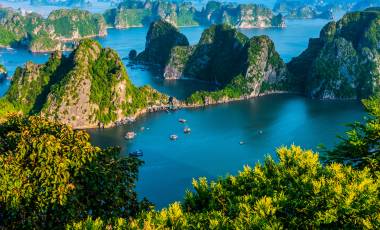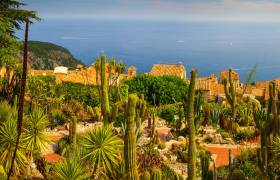There’s no denying that Vietnam is a country full of contrasts – from the lush reservoirs and dewy rice terraces in Dzao Tien country to the bustling floating markets of Cai Rang. And on our Trails of Vietnam adventure, you get to travel almost the entire length of the country, visiting key places like Hanoi, Ha Long Bay, Hoi An, the Mekong Delta and Ho Chi Minh. This action-packed 14-day itinerary is designed so you can uncover both the past and present of the “Land of the Ascending Dragon”. So, read on as we cover five highlights from this once-in-a-lifetime trip.

1. Enjoy two unique homestays in Dzao Tien country
Once you’ve explored Hanoi’s tree-lined boulevards and enjoyed an evening stroll around Hoan Kiem Lake, you’ll be whisked away on day two to Hoa Binh Province where you’ll trek through breathtaking landscapes in Dzao Tien Country. Making your way up and over the lush Truong Son Mountain range, your route veers towards Sung Village where you and your group stop for lunch. The afternoon trek takes you to a local limestone cave and tea plantation, before spending the evening with a family in the Sung Village, where you’ll get a homecooked meal and learn more about their day-to-day lives. You’ll also have the option to visit thermal baths to unwind in the evening!
The following day, you’ll take around a 5-hour trek, passing small villages, palm trees and dewy rice terraces towards the village of Da Bia, where you’ll enjoy lunch prepared by one of the Muong families. Afterwards, you’ll have the opportunity to swim in the Da Reservoir, one of the three tributaries that make up the Red River Basin, the second-largest basin of Vietnam. Or you can choose to borrow a kayak from the homestay owners and explore the reservoir instead. Come evening, you and your group will enjoy a delicious meal which can include dishes like grilled fish, pork, fried spring rolls, stir-fried morning glory and pumpkin served on banana leaves. For vegetarians and vegans, you can enjoy omelettes and tofu rolled in dried seaweed, pumpkin, stir-fried shredded cabbage, glass noodles, and plantain chips, while pescatarians can have a similar meal with panko crumb fried octopus and soup. One of the highlights for many, however, is the welcoming traditional dance performance that the local women give, which is engrained into their culture with some dances highlighting key skills including rice harvesting which has been an integral part of their lives for generations.
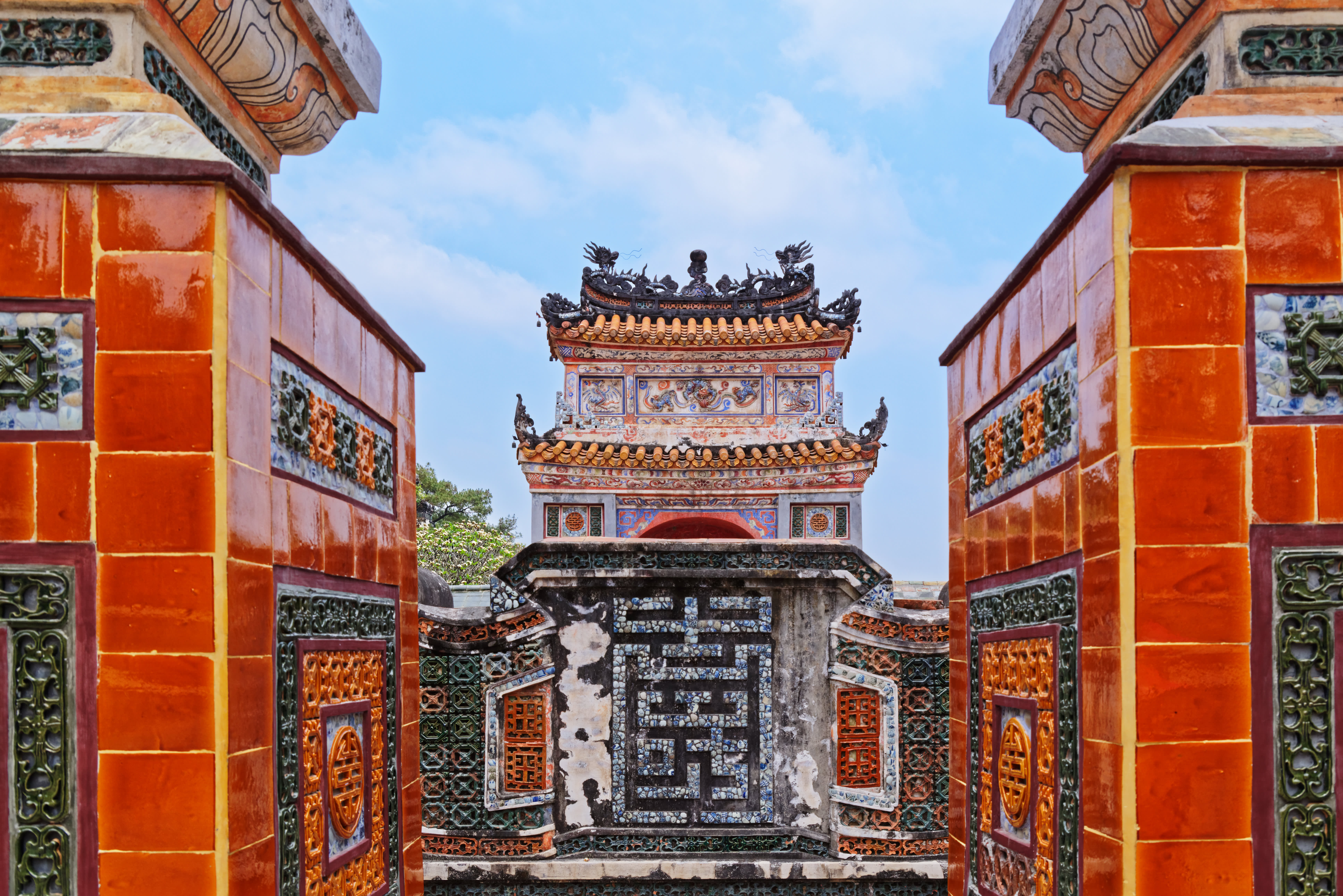
2. Visit the Emperor Tu Duc’s Mausoleum
After visiting some of Hue’s key cultural highlights, including the Imperial Citadel, the Thien Mu Pagoda and the remains of the Forbidden Purple City, you’ll get the chance to explore Emperor Tu Duc’s Mausoleum complex, just south of the city after breakfast on day eight of your trip. Reigning from 1848 to 1883, Emperor Tu Duc was revered for being one of the most enigmatic figures in the Nguyen Dynasty. He was a prolific poet, which earned him recognition as one of the leading literary figures of the time. Emperor Tu Duc was also a keen patron of the arts, overseeing the construction of many breathtaking temples and pagodas including his mausoleum complex, which remains one of Vietnam’s most visited historical sites.
Covering 12,000 m2, the complex is renowned for its stunning architecture, and on your visit, you can wander around the Honor Courtyard, the Minh Khiem Pavilion, the Stele Pavilion and the Luu Khiem Lake. The Minh Khiem Theatre is particularly fascinating as it’s one of the oldest of its kind still in existence, where it’s said that Emperor Tu Duc once enjoyed the performances of Tuong and Hat Boi, a classical drama. Known as one of the most impressive and imposing royal mausoleums in all of Vietnam a visit to this complex is a must.
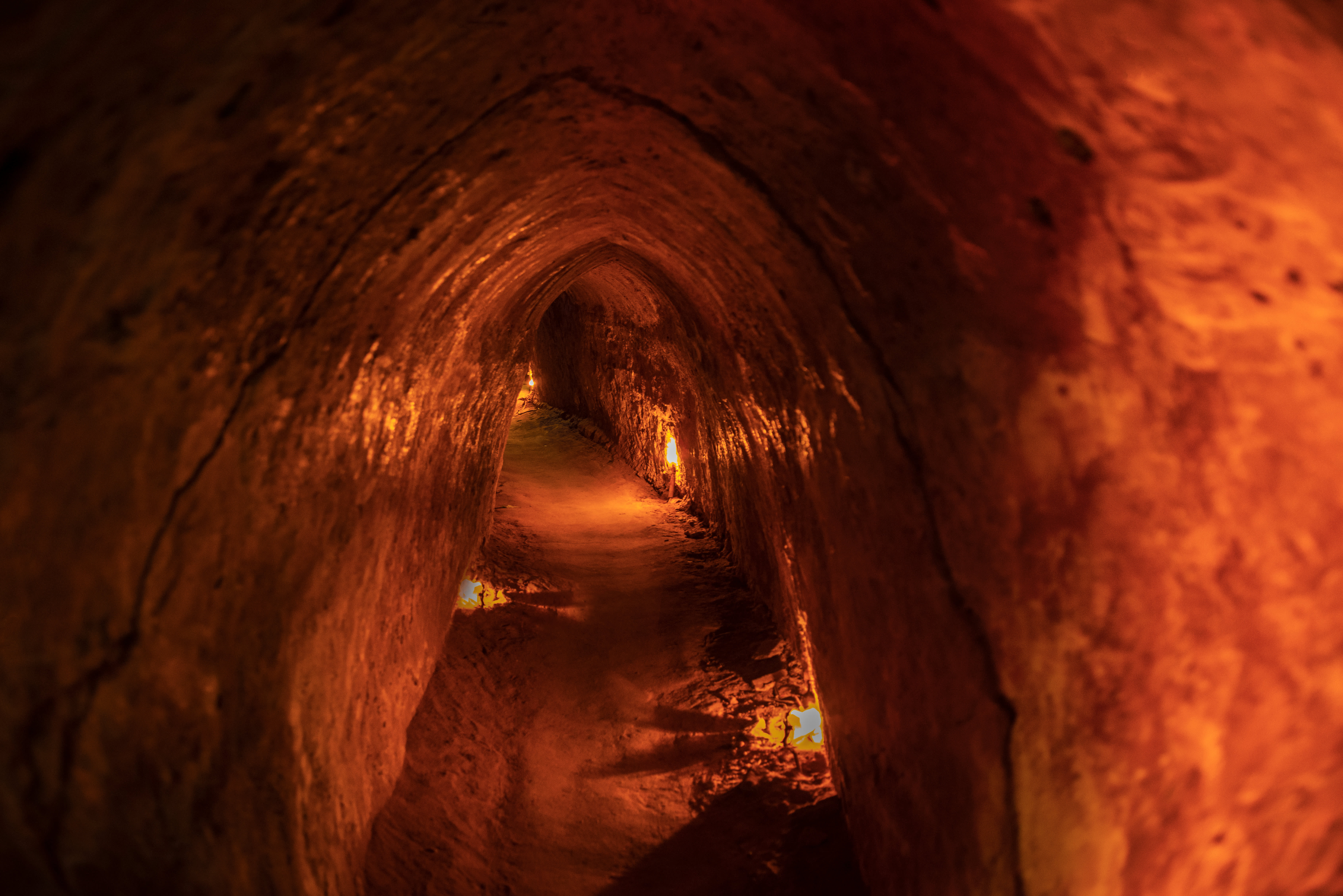
3. Crawl through Cu Chi Tunnels outside Ho Chi Minh City
Originally built during the late 1940s and early 1950s by the Viet Minh, a communist-led resistance force who fought against French colonial rule in Vietnam, the tunnels were used as a means of shelter and strategic communication for guerrilla fighters in the First Indochina War (1946-1954). However, in the 1960s when tensions escalated in the Vietnam War, the Viet Cong sought to expand the tunnels in order to create a strategic stronghold for their fight against the South Vietnamese government and its American allies. This new network allowed guerrilla fighters to move underground, largely undetected and helped them execute successful military operations. Today, the 75-mile (121 km)-long Cu Chi complex has been preserved by the Vietnamese government where it is now part of a memorial war park.
With two different tunnel display sites at Ben Dinh and Ben Duoc, you and your group will get the opportunity to crawl through sections of the tunnel network in Ben Dinh on day 10 of the trip. The Ben Dinh site, located closer to Ho Chi Minh City, has low-powered lights to make crawling through the tunnels easier and shows key displays of the types of booby traps that were used in the First Indochina War and Vietnam War. You’ll also see where surgery rooms, meeting rooms and small kitchens were located. Visiting these tunnels is a particularly moving and eye-opening experience on this trip as it gives you unique insight into the harsh realities of guerilla warfare.

4. Kayak in Ha Long Bay
The very name, “Ha Long Bay”, translates to ‘where the dragon descends into the sea’ as local folklore says the islands in the Gulf of Tonkin were formed when a dragon plunged into the emerald waters, leaving an estimated 3,000 limestone peaks in its wake. One of the best ways to discover Ha Long Bays’ hidden caves, grottos, and lagoons is by kayaking as it allows you to venture into these secluded spots, where you can marvel at the intricate rock formations, observe marine life, and soak in the peaceful ambience away from the crowds.
On day five, you’ll transfer to your very own private boat in Ha Long Bay, where you’ll grab a welcome drink and delicious lunch before spending the afternoon kayaking around the impressive limestone karsts. Your route may differ depending on the weather and sea conditions, but your expert local leader will aim to take you to hidden blue lagoons and areas with fascinating rock formations. This is a once-in-a-lifetime experience for many and will undoubtedly leave a lasting impression, as you get to explore one of the world’s most spectacular natural wonders up close. For those who are not confident on the water, you have the option to visit The Oyster Pearl Farm and Museum, near the Vung Vieng fishing village where you can learn about the intricate process of pearl farming in the region.
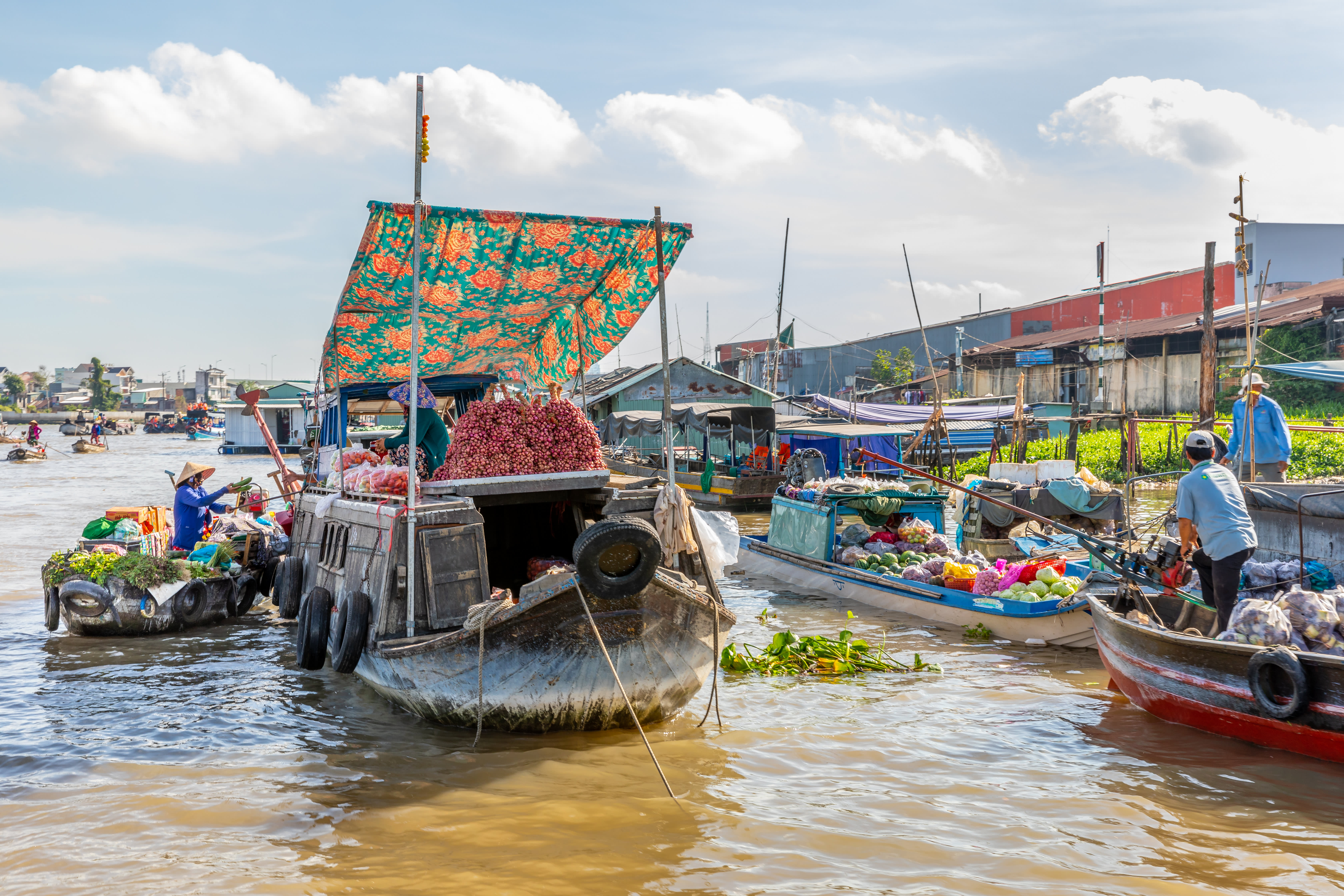
5. Experience Cai Rang, Vietnam’s largest floating market
The Mekong Delta has been known for centuries as Vietnam’s “Rice Bowl”, thanks to its extensive network of canals and rivers, and the fertile lands that surround it. The history of water-based trade in this region dates back to ancient times, with communities who live near the Mekong relying on boats as a means of commerce and transportation. As these communities continued to grow, the need for floating markets grew also as a convenient way for traders to buy, sell and trade their goods. Today, Cai Rang situated around 6 km away from Can Tho City, is one of Vietnam’s largest and liveliest floating markets, and not only for farmers and local consumers but for travellers who are looking to get a taste of what life is like on the Mekong Delta and witness traditional Vietnamese commerce in action.
On day 12, you’ll get to visit the vibrant floating market for yourself and enjoy local snacks and delicacies, including Vietnamese pancakes (banh xeo), savoury rice cakes wrapped in banana leaves (banh tet) and coconut candy – made locally from cottage industries on the Mekong Delta. The market typically starts very early in the morning, around 5:00am and lasts until 8:00am, so our expert local leader will ensure you and your group arrive early so you can experience Cai Rang at its busiest. This market is also the perfect place to look for a memento to bring home with you too, as you’ll also find a great selection of handicrafts and souvenirs made by artisans in the area, which can include hats handmade from palm leaves, woven baskets, crafted ceramics, and traditional Vietnamese silk scarves and blouses.
To find out more about our Trails of Vietnam adventure click here or browse our full selection of trips to Vietnam.

